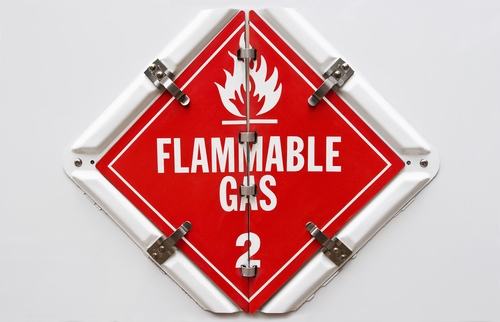LIVE UPDATES
For real-time national and regional weather updates including notifications on conditions that may impact current travel routes, click here.
Written on: December 12, 2022

Hazardous materials logistics and transportation isn’t something just anyone can provide. It is a highly specialized field.
Both the U.S. Department of Transportation and the Occupational Safety and Health Administration (OSHA) requires hazardous materials (Hazmat for short) training for employees involved in the handling or shipping of hazardous materials.
When you choose C3 Logistics for your next project, you can be assured that every employee has received Hazmat training and is committed to upholding the highest standards for safety when it comes to the handling, transport, and delivery of your hazardous materials. We expertly and properly provide logistics and transport services for the following hazardous materials categories:
As we mentioned above, both OSHA and the DOT require Hazmat training for employees who do the following as part of their jobs:
OSHA requires employees in the workplace to receive detailed training on a variety of topics, many of which have recurrent training requirements. The amount of time required for training and any testing requirements vary based on the specific job duties.
Some employees will also need DOT Hazmat training. Employees who physically handle hazmat packages or may be exposed to them because of an accident during transportation must have DOT training. This would include packers, warehouse personnel, drivers, train crews, and employees who load and unload aircraft, vehicles, and vessels.
According to training regulations under the U.S. Department of Transportation Pipeline and Hazardous Materials Safety Administration’s Title 49 of the Code of Federal Regulations (49 CFR), these five topics must be covered for HazMat training for all employees required to have training.
General awareness. This topic introduces safely transporting hazardous materials. It covers U.S. and international regulations that apply, as well as how hazardous materials are classified.
Safety. This topic covers potential dangers of the hazardous materials they use at their workplace. They will also be instructed on how they and their employer can provide protection from these hazards, as well as learn emergency response procedures as stated in 49 CFR 172, Subpart G. Finally, this topic covers proper accident-avoidance methods.
Security awareness. In this topic, employees will develop awareness of security risks associated with hazardous materials transportation and methods to enhance transportation security. They will also learn how to recognize and respond to possible security threats.
Function specific. In this topic, trainers will teach Hazmat employees how to do their job functions in compliance with regulations. Examples of this include the finishing and signing of shipping papers (including the Uniform Hazardous Waste Manifest), the loading or unloading of packages with hazardous material from a vehicle, the transfer of large amounts of hazardous materials from a tank truck or railroad tank car, and the preparation of packages with hazardous materials for shipment.
In-depth security training. This is only required for employees of a business who have a DOT Hazmat security plan. A security plan is mandated for businesses which transport explosive materials, materials which are classified as poisonous if inhaled, radioactive materials, organic peroxide Type B, and select agents or toxins regulated by the CDC 42 CFR part 73 or USDA9CFR part 121.
Training must be completed within the first 90 days of employment. Recurrent training is required every three years from the date of the first training.
Additional training may be required in some instances, such as if an employee changes roles or if their job description changes. It may also be required if regulations change.
Trust C3 Logistics for your hazardous materials transportation and logistics needs across the Eastern and Midwest United States. Contact us today to set up a consultation—we’ll be happy to help.